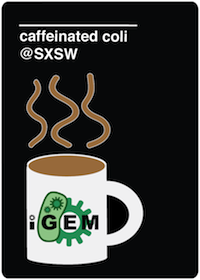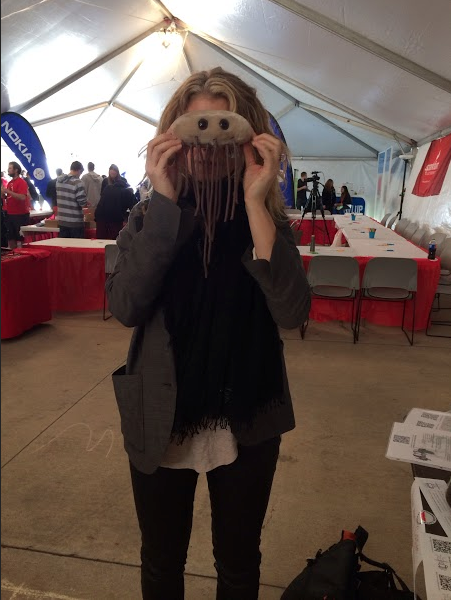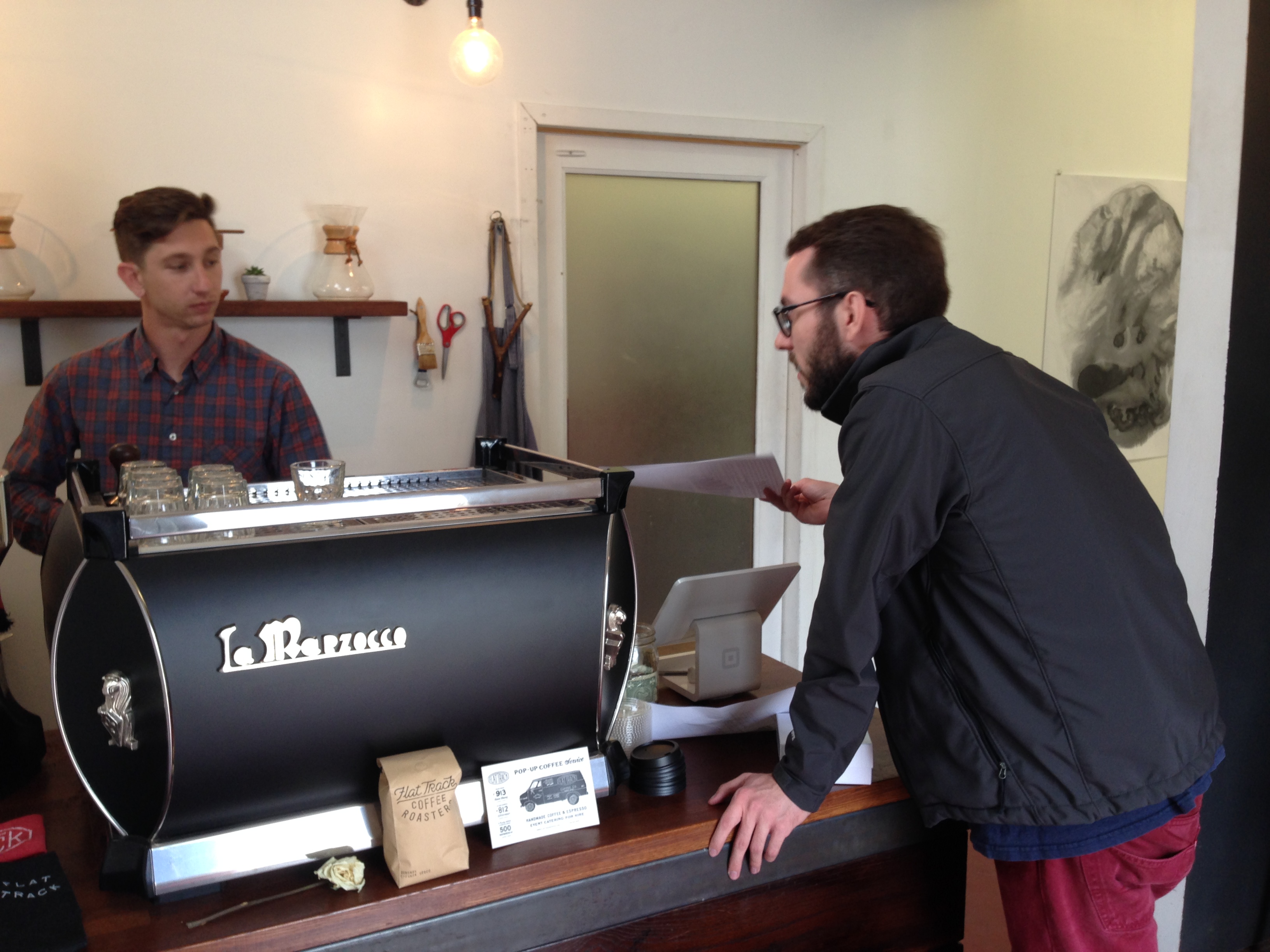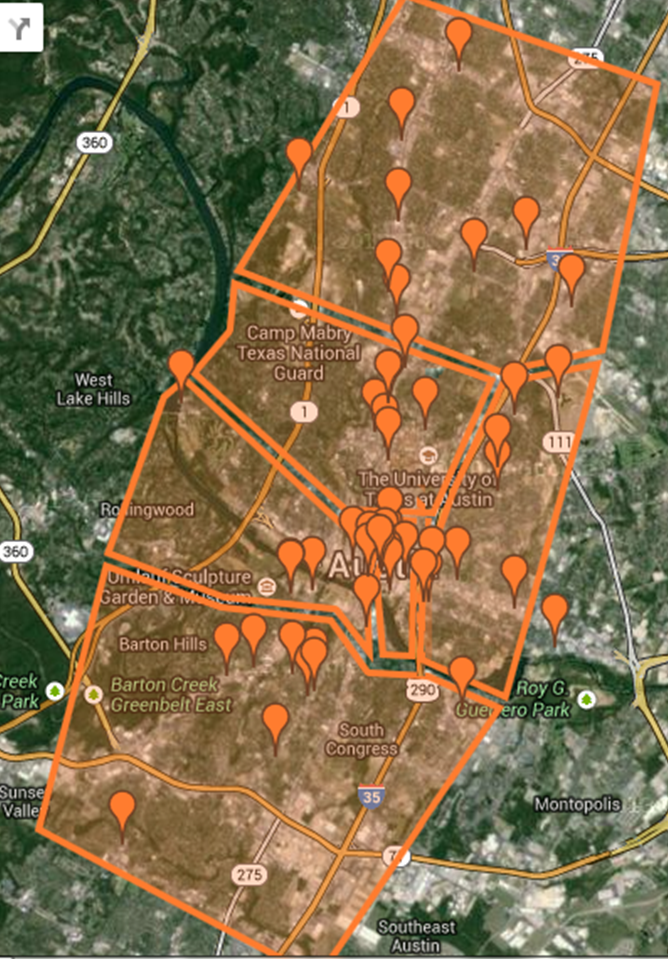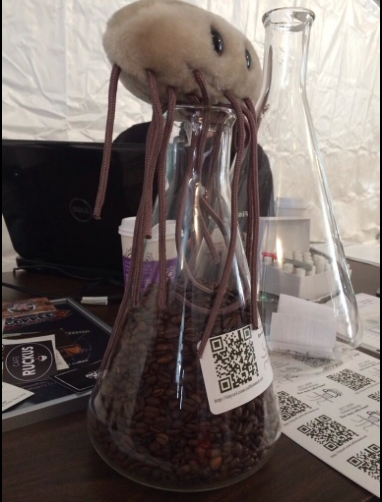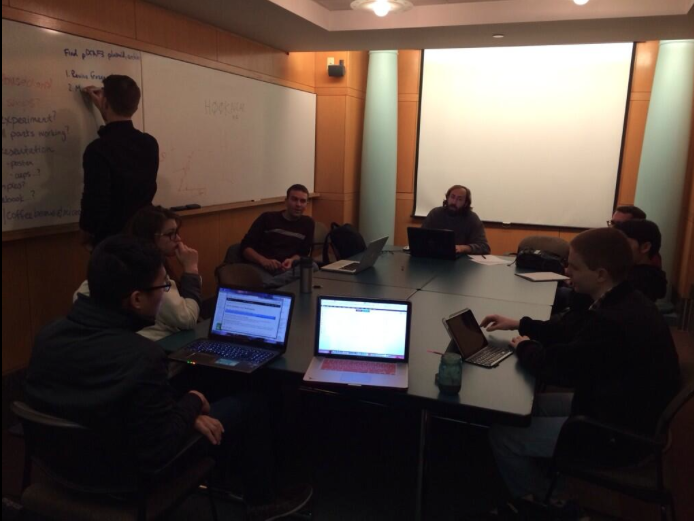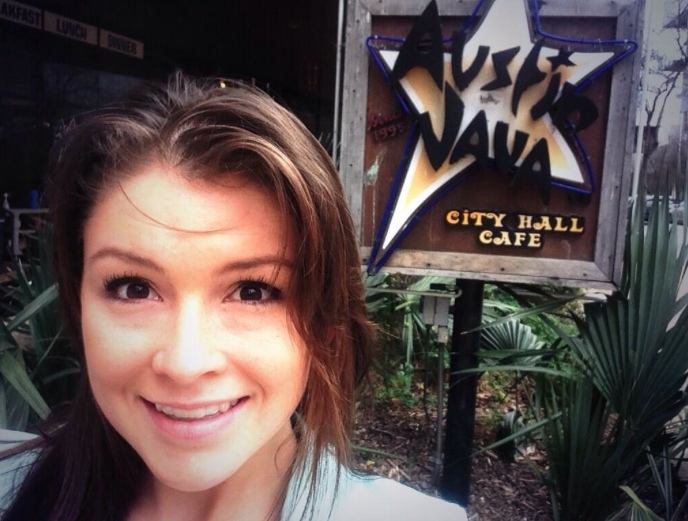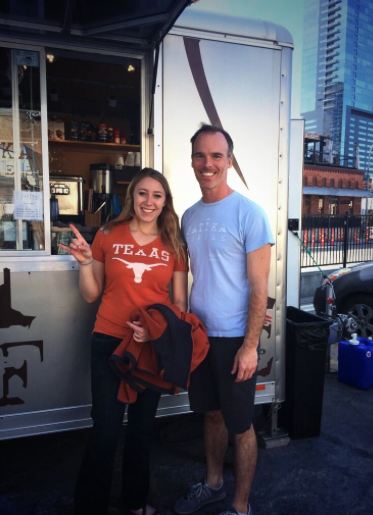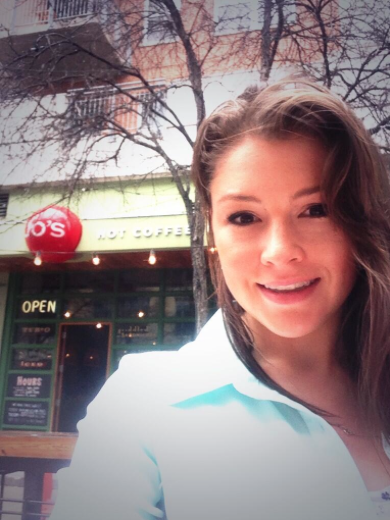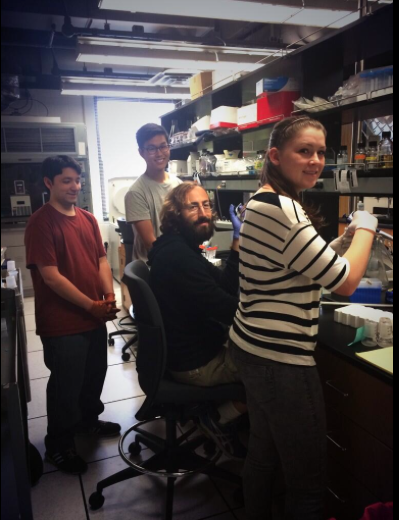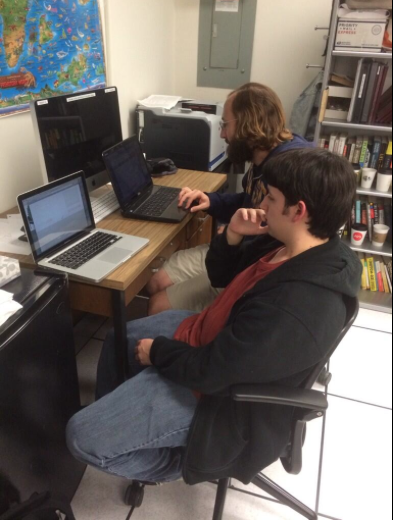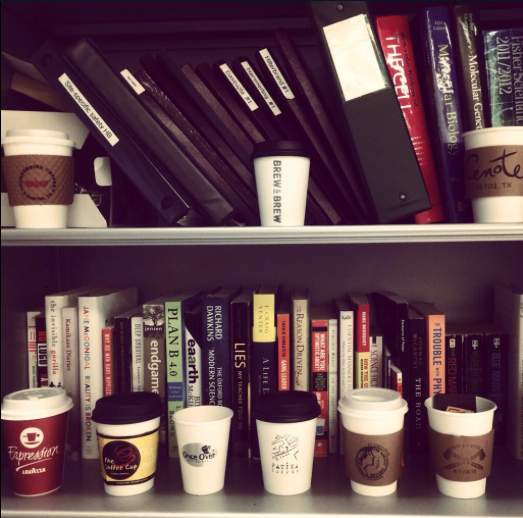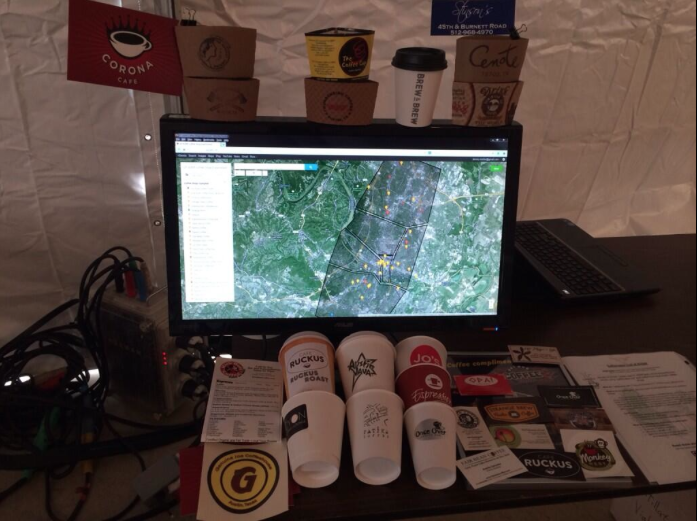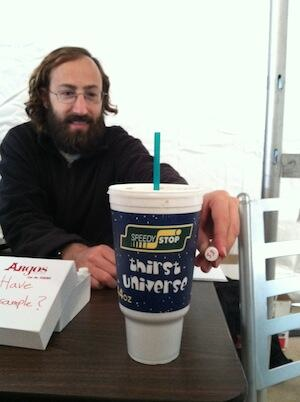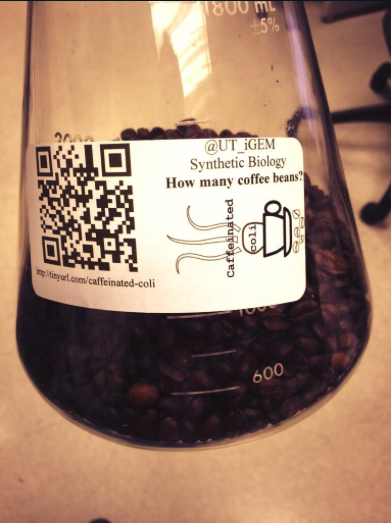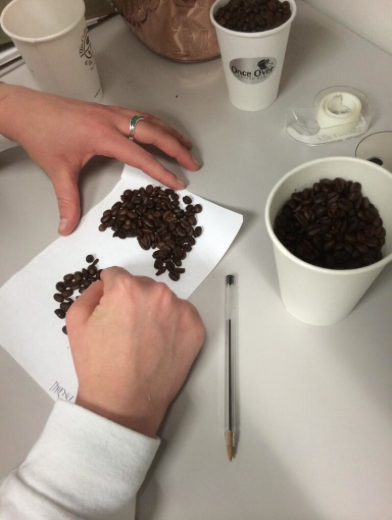Team:Austin Texas/human practices
From 2014.igem.org
Jordanmonk (Talk | contribs) |
|||
| (24 intermediate revisions not shown) | |||
| Line 79: | Line 79: | ||
| - | + | <div align="justify"> | |
<h1>Outreach at South by Southwest (SXSW)</h1> | <h1>Outreach at South by Southwest (SXSW)</h1> | ||
[[file:Ingram.JPG|thumb|left|200px| Special thanks to [https://twitter.com/krening Karen Ingram] for giving us this amazing opportunity to participate at SXSW Create 2014!]] | [[file:Ingram.JPG|thumb|left|200px| Special thanks to [https://twitter.com/krening Karen Ingram] for giving us this amazing opportunity to participate at SXSW Create 2014!]] | ||
[[file:Ellacollectscoffee.JPG|thumb|right|200px| Ella collecting a coffee sample from Austin Java.]] | [[file:Ellacollectscoffee.JPG|thumb|right|200px| Ella collecting a coffee sample from Austin Java.]] | ||
| - | In the spring of 2014, [http://www.kareningram.com Karen Ingram] invited the UT Austin iGEM team to | + | In the spring of 2014, [http://www.kareningram.com Karen Ingram] invited the UT Austin iGEM team to present at [http://sxsw.com/exhibitions/sxsw-create/participants-2014 South by Southwest (SXSW) 2014 Create]. The SXSW festival is an annual set of music, film, and interactive events in Austin. The Create event was an interactive event that showcases up-and-coming maker/hacker/DIY culture. There were a few new team members, so we saw this as an opportunity to not only teach the new members essential research techniques, but also to reach out to the community and raise awareness for the emerging field of synthetic biology. We decided to revive a previous iGEM project, [https://2012.igem.org/Team:Austin_Texas/Caffeinated_coli "Caffeinated Coli,"] and thought it would be interesting to measure the caffeine content of various different local house coffees. Such a project would give us a platform to engage the wider community on the topic of synthetic biology, and hopefully serve to better inform people about the potential benefits of synthetic biology and its applications. We were very happy with the feedback we received. |
| Line 101: | Line 101: | ||
[[file:Jordantalkscoffee.JPG|thumb|left|200px| Jordan discussing our project with Matt Bolick, co-owner of Flat Track Coffee]] | [[file:Jordantalkscoffee.JPG|thumb|left|200px| Jordan discussing our project with Matt Bolick, co-owner of Flat Track Coffee]] | ||
[[file:UT_Austin_Coffee_shops_map.png|200px|thumb|right| [http://www.google.com/maps/d/viewer?mid=zlUDhks6KHxI.ketDvlvg6zis Click here for an interactive map of coffee shops we visited!]]] | [[file:UT_Austin_Coffee_shops_map.png|200px|thumb|right| [http://www.google.com/maps/d/viewer?mid=zlUDhks6KHxI.ketDvlvg6zis Click here for an interactive map of coffee shops we visited!]]] | ||
| - | Previously, the UT Austin iGEM team created and used the | + | Previously, the UT Austin iGEM team created and used the caffeinated coli to measure the caffeine content in beverages such as soda and energy drinks. The 2012 team had originally set out with the intent on creating a bacteria that could measure caffeine poisioning in rivers downstream from chocolate factories, but modified their objectives as the project matured. Their results showed that these engineered ''E. coli'' were very accurate at detecting the levels of caffeine in formula-based drinks. We wondered how well caffeinated coli would do with something different, something that the vast majority of people in the city of Austin drink on a regular basis, coffee. |
| - | The [http://www.ibuyaustin.com Austin Independent Business Alliances'] slogan of [http://www.keepaustinweird.com "Keep Austin Weird,"] is a widely shared sentiment of Austinites, and emphasizes the need to promote local businesses. Thus, we thought it would be a great community outreach project to work with local Austin coffee shops, and do our part to "Keep Austin Weird!" | + | The [http://www.ibuyaustin.com Austin Independent Business Alliances'] slogan of [http://www.keepaustinweird.com "Keep Austin Weird,"] is a widely shared sentiment of Austinites, and emphasizes the need to promote local businesses. Thus, we thought it would be a great community outreach project to work with local Austin coffee shops, and do our part to "Keep Austin Weird!". Jordan, a senior member of the group, assembled a map of about 40 local coffee shops in Austin. The team split up one weekend to visit the coffee shops, collecting samples of their house coffee. [https://2014.igem.org/Team:Austin_Texas/medal_requirements Relevant to medal requirements], our team was very diligent about explaining the nature of our science and how it relates to synthetic biology before, during, and after collecting coffee samples. In addition, we were very aware of ethical issues when interacting with the public. We informed each shop when, where, and how the caffeinated coli data would be used, and we fully respected the wishes of those who requested that their involvement not be made public. This being said, in the vast majority of cases we were met with much enthusiasm by the coffee shop owners and employees, whose interest had been piqued when we described our experiment, often resulting in discussions of science, synthetic biology, and coffee. |
| Line 112: | Line 112: | ||
[[file:teamcoffee.png|400px|thumb|center|The beginning of something great! Special thanks to Razan Alnahhas (second row, right) for mentoring and to Mike Hammerling (not pictured) and Ashley Kessel (second row, left) for assistance in sample collection.]] | [[file:teamcoffee.png|400px|thumb|center|The beginning of something great! Special thanks to Razan Alnahhas (second row, right) for mentoring and to Mike Hammerling (not pictured) and Ashley Kessel (second row, left) for assistance in sample collection.]] | ||
| - | + | <h1>Doing the Science</h1> | |
[[file:UT_Austin_E._coli_coffee_cultures.jpg|250px|thumb|left| Cultures of knockout strain grown with collected coffee samples.]] | [[file:UT_Austin_E._coli_coffee_cultures.jpg|250px|thumb|left| Cultures of knockout strain grown with collected coffee samples.]] | ||
| Line 120: | Line 120: | ||
| - | + | <h2>Measuring Caffeine Content</h2> | |
| - | The protocol was simple: we provided our | + | The protocol was simple: we provided our caffeinated coli with a diluted sample of coffee we had acquired from the various shops, and then compared the relative growth of each culture by measuring the absorbance at 600 nm (OD<sub>600</sub>). The simplicity of the project was the key to its success. It provided a glimpse into the exciting new world of synthetic biology for the new members and allowed them to learn vital skills that were used in day to day research during the summer. |
| - | Our results can be seen in Figure 1, below. | + | Our results can be seen in ''Figure 1'', below. |
| - | [[file:UT_Austin_relative_caffeine_levels_coffee_shops.png| | + | [[file:UT_Austin_relative_caffeine_levels_coffee_shops.png|950px|thumb|center| '''Figure 1.''' Relative levels of caffeine in house coffee samples from around Austin. Data depict the amount of caffeine in the coffee relative to the average caffeine content for all samples tested, as determined using the Caffeinated Coli.]] |
| - | + | <h1>Presenting the Science</h1> | |
| - | In March 2014, we presented this data set at the SXSW festival. As part of this outreach, we explained our project and synthetic biology to a wide range of people. Many people who came by had little to no background in science or technology, and | + | In March 2014, we presented this data set at the SXSW festival. As part of this outreach, we explained our project and synthetic biology to a wide range of people. Many people who came by had little to no background in science or technology, and those who did did not have a thorough understanding of what synthetic biology was or how it could be helpful. By discussing our experiments with bacteria and coffee, an interesting and easy-to-understand application, we were able to explain the basic concepts of synthetic biology and how it can be used in a beneficial way. Occasionally, these conversations would branch out into wider topics of science and technology. We feel this is a far better way for the public to learn about synthetic biology than from rumors about GMOs. |
| - | + | <h2>Community Response</h2> | |
[[file:SXSWcreatetable.JPG|left|400px|thumb| Table at SXSW]] | [[file:SXSWcreatetable.JPG|left|400px|thumb| Table at SXSW]] | ||
| Line 142: | Line 142: | ||
| - | [[file:e.coliplush.png|thumb|right| Coffee bean counting contest]] | + | [[file:e.coliplush.png|thumb|250px|right| Coffee bean counting contest]] |
People were also extremely curious as to why the Wright Bros. Brew & Brew sample had a significantly higher amount of caffeine. This data point resulted in one of the owners of Wright Bros. Brew & Brew contacting us to understand our process of determining caffeine content and why they were so far outside the mean. The owner, Matt Wright, concluded, after discussing our project and the coffee brewing process (and consulting with employees), that the specific pot of coffee was probably just not fully drained, i.e. there was less water in the batch than normal, resulting in a higher caffeine per volume content. This was just a starting point though, as the conversation with Mr. Wright spanned the entire process of making coffee, quality control, and a little bit of the science behind the process. It also developed a nice contact point for a future continuation of science and coffee. | People were also extremely curious as to why the Wright Bros. Brew & Brew sample had a significantly higher amount of caffeine. This data point resulted in one of the owners of Wright Bros. Brew & Brew contacting us to understand our process of determining caffeine content and why they were so far outside the mean. The owner, Matt Wright, concluded, after discussing our project and the coffee brewing process (and consulting with employees), that the specific pot of coffee was probably just not fully drained, i.e. there was less water in the batch than normal, resulting in a higher caffeine per volume content. This was just a starting point though, as the conversation with Mr. Wright spanned the entire process of making coffee, quality control, and a little bit of the science behind the process. It also developed a nice contact point for a future continuation of science and coffee. | ||
| - | Similar conversations involving science, synthetic biology, coffee, and the community occurred throughout the entire SXSW event. The various coffee shop owners and baristas were curious if they could employ science to help them make a better drink or a more customizable product. Some of the SXSW attendees were in the coffee making business and were interested in thinking about whether such science could be used to understand where the caffeine goes during each step in the coffee-making process. | + | Similar conversations involving science, synthetic biology, coffee, and the community occurred throughout the entire SXSW event. The various coffee shop owners and baristas were curious if they could employ science to help them make a better drink or a more customizable product. Some of the SXSW attendees were in the coffee making business and were interested in thinking about whether such science could be used to understand where the caffeine goes during each step in the coffee-making process. |
| + | |||
| + | '''Additionally, a number of individuals who home brew coffee or kombucha or other organic drinks, such as tea, wondered if this technology could be used to cheaply and quickly test their samples to determine the amount of caffeine they have in their home brews. We, of course, said yes!''' | ||
| + | |||
| + | To involve everyone attending the event and raise more awareness for the iGEM team, we held a contest in which patrons attending the event could enter to win an ''E. coli'' plush upon following us on [https://twitter.com/UT_iGEM Twitter]. | ||
| - | + | <h2>Impact on Synthetic Biology</h2> | |
| + | This community outreach project presented the team with an opportunity to dispel misoconceptions the public has about the field of syntetic biology and our work with genetically modified organisms. We worked to show people the benefits of GMOs, such as the application our caffeinated coli, which were originally created in 2012 with bioremediation in mind. By presenting the science in a fun and easily digestible manner, members of the general public could see synthetic biology in a new light. | ||
| - | + | The challenge of accurately detecting caffeine in biological products is fascinating, and we hope to further refine our methods in the future, as we cannot currently fully differentiate between caffeine and certain other xanthines. Hopefully, we will be able to reach out again next year and develop an even better synthetic biology application. | |
| - | + | ||
| - | + | <h2>SXSW Adventure in Photographs (hover over image for captions!)</h2> | |
| - | [[file:Firstthinktanksession.png| | + | [[file:Firstthinktanksession.png|left| 400px| First Think Tank Session!]] |
| - | [[file: razancollectscoffee.png| | + | [[file: razancollectscoffee.png|right|400px|Razan collects coffee]] |
| - | [[file:Katecollectscoffee.png| | + | [[file:Katecollectscoffee.png|left|400 px| Kate collects coffee]] |
| - | [[file:Ellacoffeerepping.png| | + | [[file:Ellacoffeerepping.png|right|400px| Ella with Patika coffee kiosk employee]] |
| - | [[file:KateatJos.png| | + | [[file:KateatJos.png|left|400 px| Kate visits Jo's Coffee]] |
| - | [[file:Teaminaction.png| | + | [[file:Teaminaction.png|right|400px| Dennis instructing the team]] |
| - | [[file:dennisandalex.png| | + | [[file:dennisandalex.png|left|400px| Dennis and Alex hard at work]] |
| - | [[file:coffeecuphaul.png|400 px| | + | [[file:coffeecuphaul.png|400 px|right]] |
| - | [[file:Closertablesetup.png| | + | [[file:Closertablesetup.png|left|400px| Our table setup at SXSW]] |
| - | [[file:3-d printing.png| | + | [[file:3-d printing.png|right|400px| The team gets to explore SXSW and try out new 3-D printer!]] |
| - | [[file:Dennistakingcaffeinesample.png| | + | [[file:Dennistakingcaffeinesample.png|left|400px| Dennis takes a sample of someones drink to test at SXSW]] |
| - | [[file:Dr.WhoElla.png| | + | [[file:Dr.WhoElla.png|right|400px| Any Whovians out there? SXSW had a Tardis!]] |
| - | [[file:Alexgameface.png| | + | [[file:Alexgameface.png|left|400px| Alex has got his game face on!]] |
| - | [[file:coffeebeancounting1.png| | + | [[file: allcountedcoffebeans.png|right|300px| All done!]] |
| - | [[file:coffeebeancounting2.png| | + | [[file:coffeebeancounting1.png|left|300px| Coffee bean counting begins for the winner of the plush ''E. coli''!]] |
| - | + | [[file:coffeebeancounting2.png|left|345px| Just keep counting, just keep counting, just keep counting, counting counting]] | |
| + | </div> | ||
Latest revision as of 01:13, 18 October 2014
| |||||||||||||||||||||||||||||
 "
"

